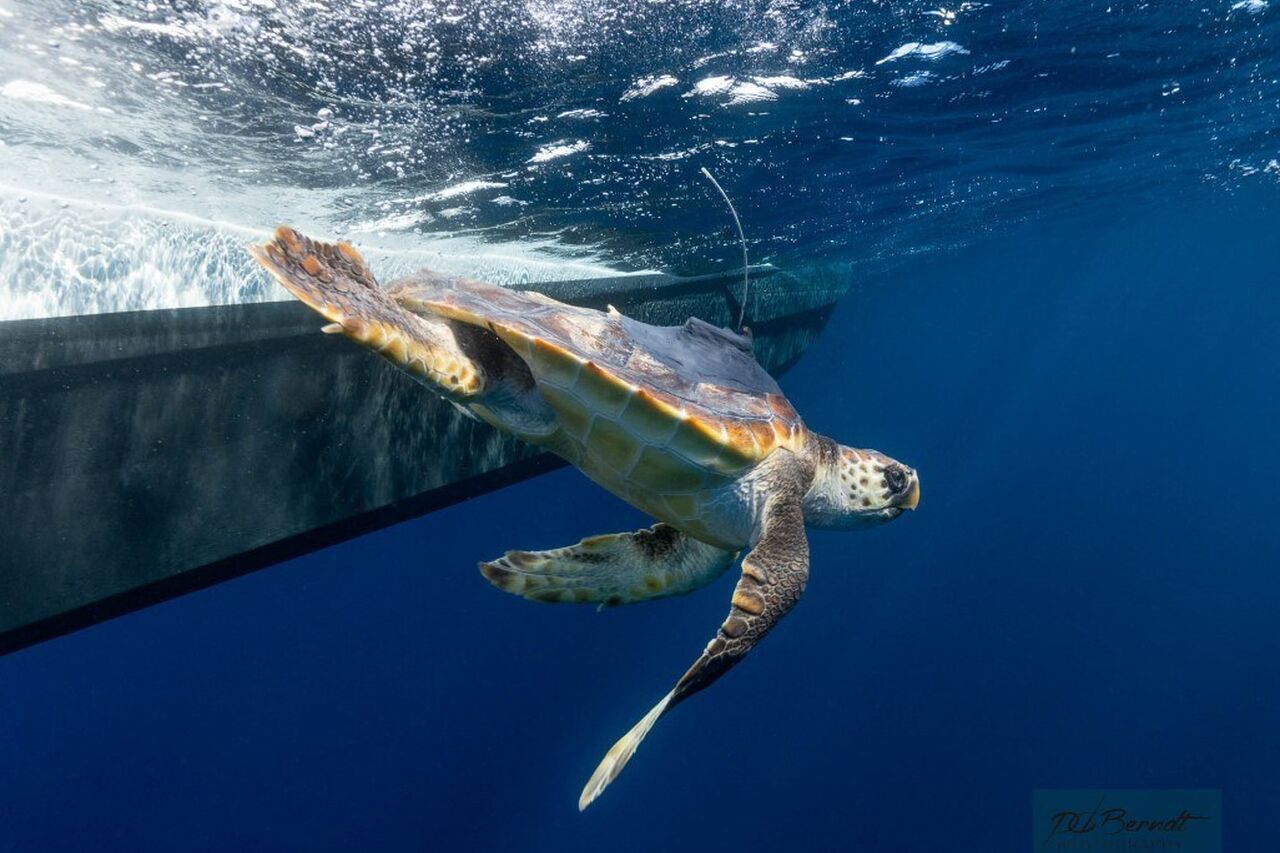Tracking our Turtles: Little Pan's big journey

Pan the loggerhead turtle's satellite tag has finally run its course.
Let's hear more about Pan's journey from Talitha Noble, Conservation Manager at the Turtle Conservation Centre:
Pan arrived at the Two Oceans Aquarium Foundation’s Turtle Conservation Centre as the 75th loggerhead post-hatchling turtle of the 2019 stranding season. Weighing just 49g at the time of his arrival, Pan was expected to undergo the typical rehabilitation and release process of all stranded hatchlings that arrive at the Centre. However, Pan’s story was not typical.
Instead, this little turtle experienced an almost five-year journey with the Turtle Conservation Centre team. This included first-of-its-kind rehabilitation processes and a national release collaboration, making Pan a little more extra special.
When the rest of the 2019 post-hatchling cohort was released at the end of the season, Pan needed to stay behind due to an ongoing ear infection. Worryingly, the ear infection that Pan had been battling had moved into his skull and evolved into a nasty abscess. Our veterinary team did a great deal of research and decided to implant antibiotic beads into Pan’s ear to allow for a continuous slow release of medication. This was an incredibly unusual and novel procedure to do for a sea turtle!
However, despite this incredible effort, Pan eventually had to undergo surgery (informed by an MRI of his head) to physically remove the abscess from the skull, enabling him to finally heal.
Thanks to this surgery, Pan recovered to full strength and was declared ready for release after almost five years of rehabilitation. Together with two other loggerhead turtles, (Caddy and Donny), Pan was part of an exciting satellite tracking research opportunity. These three young turtles were fitted with satellite tags and released from three different sites in South Africa. The aim was to see how each turtle behaved after its release and where it travelled. Researchers following the tagged turtles were hopeful that this project would allow them to gain valuable insight into the wild behaviours of these individual young loggerheads after their long stints of rehabilitation.
Pan was released on 16 July 2022, 80 km off the coast of Hout Bay in Cape Town and the team anxiously waited for the first few satellite pings to see where he would go! While Caddy and Donny’s tags both fell off within the first year of release, Pan’s remained attached for a while longer. The team was thrilled to be able to follow Pan’s ocean journey as he headed up the west coast of southern Africa.

The satellite data from the tag provided fascinating and valuable information about Pan’s movements and behaviour at sea. The Turtle Conservation Centre team was able to follow the extent of Pan’s movements, the temperature of the water he was swimming in, and the speed at which he was swimming. At his most northern point he was 200km north of Lüderitz in Namibia and was tracked to 1 100km offshore at his most westerly point, a mere 200km away from the mid-Atlantic ridge.
It was interesting to note that much of Pan’s movements were not in the surface currents but rather seemed to be motivated by food availability. In addition, the satellite tracking data showed that he generally did a really good job of staying away from the very cold coastal water and found himself in an average water temperature of around 18 degrees Celcius. Pan maintained a consistent swimming speed of about 19km per day and in the 631 days the team was able to track him, he covered 12 000km!
It is considered a great achievement to have been able to follow Pan for those 631 days, after which his satellite tag either fell off or stopped transmitting. The Turtle Conservation Centre team’s journey with Pan might have come to an end, but it is a journey which contributed significantly to turtle and marine conservation. A journey of great value without a doubt.
Related News
Sign up to our Newsletter
Receive monthly news, online courses and conservation programmes.





